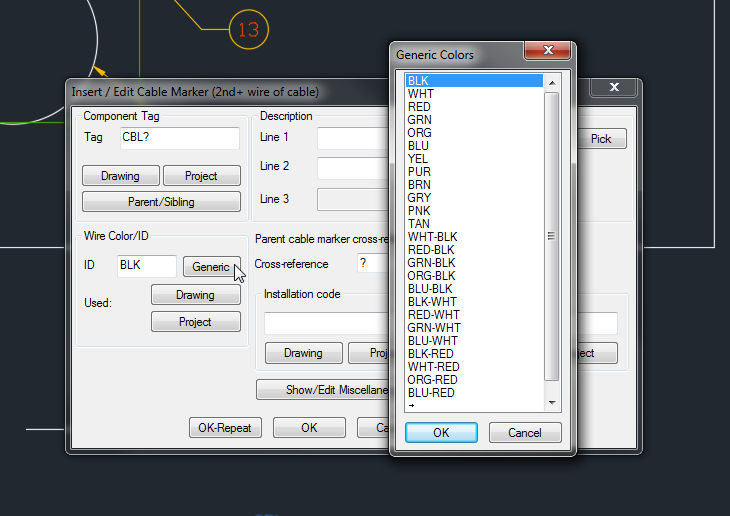
Wire numbering is a fundamental aspect of electrical design in Autodesk Electrical, providing a systematic way to identify and organize wires within schematic drawings. Properly managed wire numbers enhance clarity, facilitate troubleshooting, and ensure compliance with industry standards. In this extensive guide, we’ll delve into the process of creating and managing wire numbers in Autodesk Electrical, offering detailed instructions, best practices, and tips to optimize your electrical design workflow.
1. Understanding the Importance of Wire Numbers
Before delving into the specifics of wire numbering in Autodesk Electrical, let’s explore why wire numbers are essential in electrical design.
Clarity and Organization
- Clear Identification: Wire numbers provide a clear and systematic way to identify individual wires within schematic drawings, reducing confusion and ensuring accurate interpretation by designers and technicians.
- Structured Layout: Organizing wires with unique numbers facilitates a structured and organized layout, improving readability and comprehension of schematic diagrams.
Troubleshooting and Maintenance
- Efficient Troubleshooting: Well-managed wire numbers streamline troubleshooting processes by enabling technicians to quickly locate and identify specific wires within electrical systems.
- Maintenance Support: Wire numbers aid in maintenance tasks by providing crucial information about wire connections and configurations, facilitating repairs and upgrades.
Compliance and Documentation
- Industry Standards: Wire numbering practices adhere to industry standards such as ANSI, IEC, or company-specific standards, ensuring compliance with regulatory requirements and consistency across projects.
- Documentation Integrity: Properly managed wire numbers contribute to the integrity of project documentation, supporting accurate documentation of electrical systems for future reference and revision.
2. Creating Wire Numbers in Autodesk Electrical
Now, let’s explore the process of creating wire numbers within Autodesk Electrical.
Step 1: Access Wire Numbering Tools
- Wire Numbering Toolbar: Navigate to the wire numbering toolbar within Autodesk Electrical to access wire numbering tools and options.
Step 2: Configure Numbering Settings
- Numbering Format: Choose the desired format for wire numbers, such as numeric sequences, alphanumeric codes, or custom numbering schemes.
- Automatic Numbering: Enable automatic numbering to assign unique numbers to wires automatically based on predefined settings.
Step 3: Apply Numbers to Wires
- Select Wires: Click on individual wire segments or select multiple wires to apply wire numbers.
- Numbering Tool: Utilize the wire numbering tool from the toolbar to apply numbers to selected wires.
Step 4: Customize Number Properties
- Number Format: Customize number properties such as font size, style, color, and alignment to ensure consistency and clarity.
- Positioning: Adjust the position of wire numbers relative to wire segments to optimize visibility and readability.
Step 5: Review and Validate Numbers
- Visual Inspection: Review wire numbers within schematic drawings to verify accuracy and completeness of numbering.
- Validation Process: Validate wire numbers against design specifications or requirements to ensure alignment and compliance.
3. Managing Wire Numbers in Autodesk Electrical
After creating wire numbers, it’s crucial to manage them effectively to maintain consistency and accuracy within schematic drawings.
Step 6: Update and Revise Numbers
- Revision Control: Implement a revision control system to track changes and updates to wire numbers throughout the design process.
- Update as Needed: Update wire numbers as needed to reflect changes or revisions in the design, ensuring accuracy and alignment with project requirements.
Step 7: Cross-Referencing
- Cross-Reference Tool: Utilize Autodesk Electrical’s cross-reference tool to establish and maintain accurate references between wire numbers and connected components.
- Cross-Check Connections: Cross-check wire numbers with component tags and references to ensure consistency and accuracy in wiring connections.
Step 8: Coordination with Component Numbers
- Integration with Components: Coordinate wire numbers with component numbers to ensure consistency and alignment between wires and connected components.
- Cross-Verification: Verify that wire numbers correspond accurately with component tags and references to facilitate troubleshooting and maintenance.
4. Best Practices for Managing Wire Numbers
To optimize the management of wire numbers in Autodesk Electrical, consider the following best practices:
Consistent Numbering Conventions
- Standardized Formats: Establish consistent numbering conventions for wire numbers to ensure uniformity and clarity across schematic drawings.
- Descriptive Labels: Use descriptive labels or abbreviations to convey relevant information about wire numbers, such as function, location, or specifications.
Automated Numbering
- Utilize Automation: Take advantage of Autodesk Electrical’s automation features to streamline the numbering process and minimize manual effort.
- Automation Settings: Configure automation settings to generate wire numbers automatically based on predefined rules and criteria.
Regular Review and Maintenance
- Periodic Review: Schedule regular reviews of wire numbers within schematic drawings to identify any inconsistencies, errors, or omissions.
- Update as Needed: Update wire numbers as needed to reflect changes or revisions in the design, ensuring accuracy and alignment with project requirements.
Collaboration and Documentation
- Team Collaboration: Foster collaboration among team members to ensure consistent numbering practices and alignment with project objectives.
- Documentation Guidelines: Document wire numbering guidelines and standards to provide clear instructions and reference materials for designers and stakeholders.
5. Conclusion
Effectively managing wire numbers in Autodesk Electrical is essential for creating clear, organized, and compliant schematic drawings. By following the steps outlined in this guide and adhering to best practices, you can ensure accurate, consistent, and efficient management of wire numbers within your electrical design projects. Whether you’re working on simple circuits or complex systems, mastering wire numbering will enable you to convey information effectively, support troubleshooting and maintenance efforts, and achieve superior results in your designs.